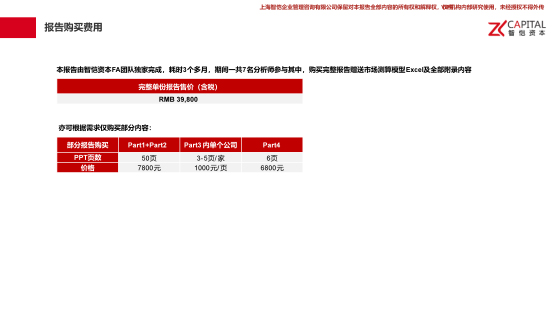This report is mainly divided into five parts:Overview, lithium resource supply and demand research, lithium recycling industry chain and model analysis, lithium recycling company introduction, and iron phosphate recycling industry analysis.
In the overview section. We first reviewed the price trends of domestic industrial-grade lithium carbonate (subsequently referred to as "industrial carbon"), battery-grade lithium carbonate (subsequently referred to as "electric carbon"), and lithium hydroxide monohydrate in the past 10 years. The entire industrial chain from lithium ore to downstream terminal consumer goods is introduced. Finally, we introduce the competitive landscape of domestic lithium salt producers.
In the research part of supply and demand of lithium resources. We first analyzed the status quo of global and domestic lithium resources on the supply side and the forecast until 2026. In 2022, salt lakes accounted for 58% of the world's proven lithium resources (mainly distributed in America and Australia), spodumene Accounted for 26% (mainly distributed in South America and Australia) and others (lepidolite and lithium clay) accounted for 16%. The current supply of global lithium resources is mainly lithium extracted from ore; in 2022, all kinds of proven Among the lithium resources, salt lakes accounted for 61%, lepidolite accounted for 25%, and spodumene accounted for 14%. We predict that the domestic supply of lithium resources will reach 800,000 tons of LCE in 2026.Secondly, we have made an in-depth and detailed analysis of the downstream terminal applications of lithium resources. It is estimated that by 2026, new energy vehicles, energy storage and small power, and 3C consumer electronics will require 724,000, 200,000, and 38,000 tons of LCE respectively. There is also a certain amount of but relatively stable demand for resources. After considering this part of the demand, we predict that the gap between supply and demand of domestic lithium resources will reach 434,000 tons of LCE in 2026. Considering the demand for cathode materials closest to lithium resources in the supply chain, judging from the expansion plans of ternary and lithium iron phosphate cathode material companies, the gap between the supply and demand of domestic lithium resources will reach 510,000 tons in 2026 LCE. However, our forecast on the supply of lithium resources is only based on the current output and production capacity planning of mines and salt lakes that can be found at present. It cannot be ruled out that new lithium resource production capacity plans will be released in the next few years. The imbalance between supply and demand may improve; this also reflects from the side that the market space for lithium recycling in the future will be very broad.
In the lithium recovery industry chain and model analysis section. We first carefully analyzed the industrial chain of lithium battery recycling. The incoming materials include waste batteries at downstream terminals, waste materials produced by positive electrode material factories and battery factories in the production process, etc., which are used in stages or element recovery through certain technical means. Reuse. Next, we predict the amount of recyclable battery waste and positive electrode material waste in China in the next few years. It is estimated that the amount of all the waste mentioned above corresponding to recyclable positive electrode materials will reach 462,000 tons in 2026. Finally, we introduced the three mainstream recycling modes currently on the market and introduced in great detail the dismantling and recycling of waste batteries, the wet recycling of lithium iron phosphate waste batteries, the wet recovery of lithium from ternary waste batteries and the three recycling methods. The process of first extracting lithium recovery from waste batteries by fire method.
In the Lithium Recycling Business Introduction section. Through in-depth research, we sorted out the 23 major companies currently on the white list of power battery recycling and compiled the core information of each company into a conclusive report that can be used directly. The core information includes the composition of the company's team process introduction, production cost, future production capacity planning and downstream customer layout, etc. At the same time, our main companies have made detailed process comparisons and comparisons of core business indicators. Finally, we predict the supply and demand relationship in the recycling raw material market in the next few years. The supply and demand relationship of ternary raw materials in 2022-24 will be tenser than that of lithium iron phosphate raw materials, and the supply and demand relationship of lithium iron phosphate raw materials will start from 25 years There may be a shortage of supply.
Analysis section in Lithium Iron Phosphate Recycling Industry. We first sorted out the layout of lithium iron phosphate production lines by major lithium recycling companies and compared their producible products, existing processing capacity and future production line layout. Secondly, we also introduced in detail the production process of ferric phosphate at the recycling end.
Introduction to the lithium resource industry chain:

Domestic resource supply forecast:

Prediction of lithium resource demand for domestic power batteries:

Analysis of the supply-demand gap of lithium resources:

Comparison of main lithium recovery enterprises' processes:

Abstract
Lithium price trend analysis
Lithium resource industry chain analysis
Competitive Landscape of Major Lithium Salt Manufacturers
Part1 Research on supply and demand of lithium resources
Part 2Lithium recovery industry chain and model analysis
Part 3 Introduction to Lithium Recovery Enterprises
Part 4 Analysis of Iron Phosphate Recovery Industry

Copyright 2006-2021, Design placeholder Fulbright Medical Inc.Design by VPA Brand.